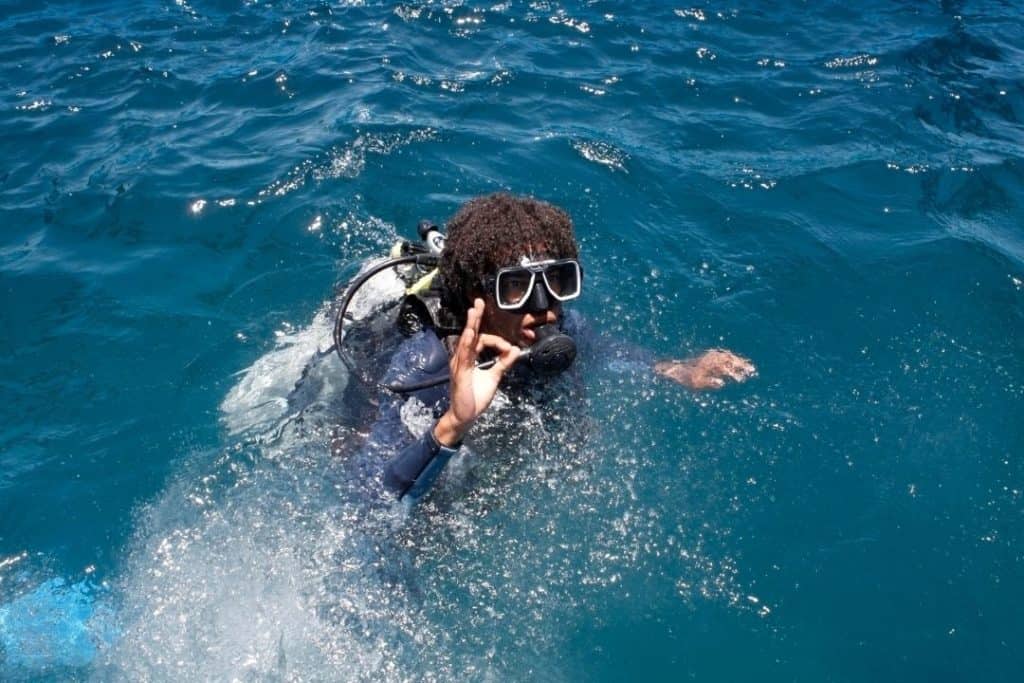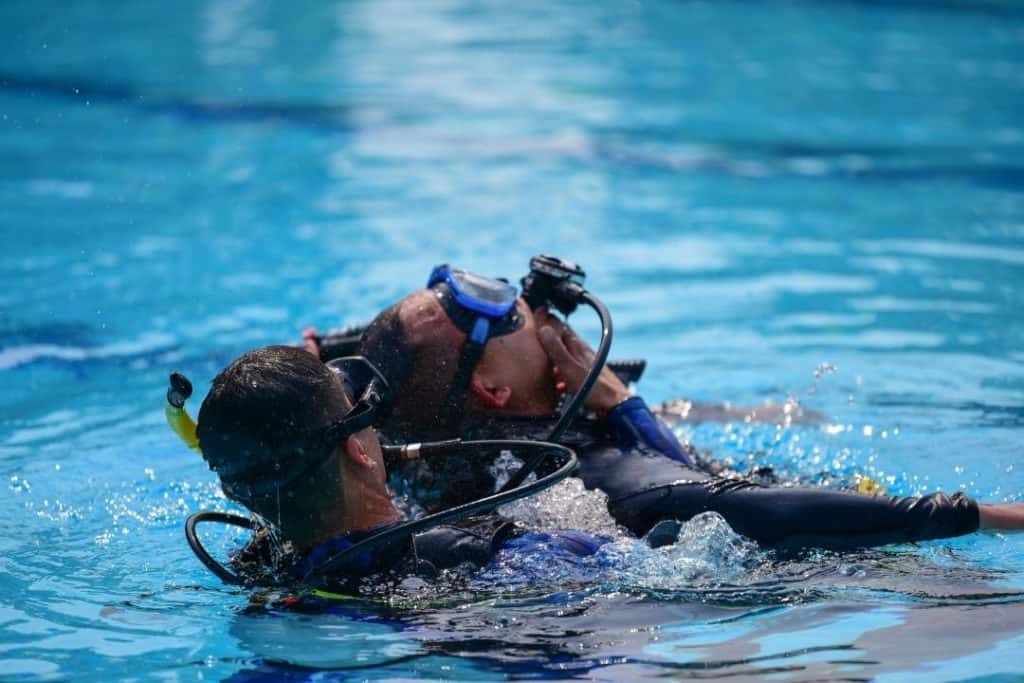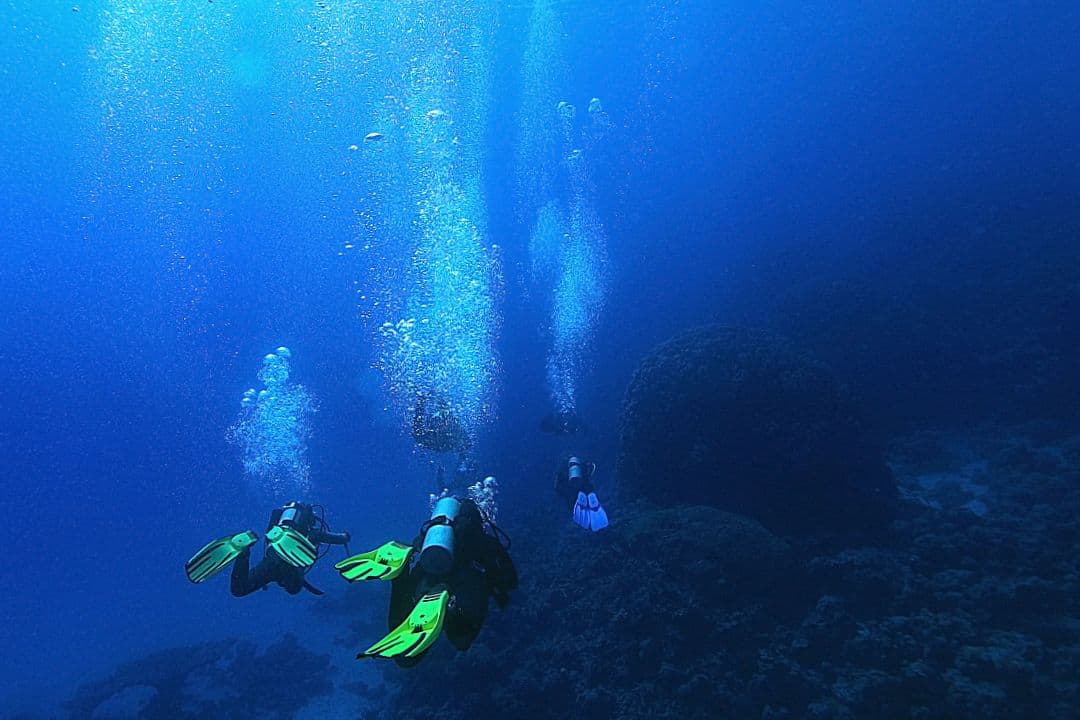How do you become scuba certified? For those around the world that feel the burning curiosity to explore the underwater universe, scuba certification offers the perfect balm.
Once divers discover the adventure that habitats under the ocean surface have to offer, a natural next step for the curious diver is to explore how else they can interact with scuba.
Scuba diving is an entire network of possibilities, from discussing dive destinations to contemplating the different arenas of training.
What are the different scuba diving certification levels?
The levels of scuba certification correspond to specific categories of training. The first level of training is all about how to keep yourself safe underwater. Once a diver has mastered themselves, the second step is learning to be aware of your surroundings, manipulate tools underwater, and handle new environments and stresses. The third level of training teaches divers how to be responsible for others, while the final level is learning to train new students (become a professional).
Let’s dive in — scuba certification levels, explained!
Level 1 – Keep Yourself Safe

The purpose of introductory diving courses is simple — how do you stay alive underwater?! There are actually quite a few options for trying scuba diving without getting certified (like the discover scuba diving course through PADI / Scuba Discovery Course through SDI), but the safest option for your first voyage underwater is to take the full certification course through any agency.
Those interested in becoming scuba divers that have the knowledge and comfortability to dive without a professional should definitely take the first certification course and skip the “try it out” classes.
The name of the first certification course can differ depending on the agency, but should include coursework, pool work, and 4 ocean dives, resulting in an open water certification card.
While the end result of the course is the most important part, it can be confusing to understand which course to take when you don’t know the course names and what they mean. For reference, here are the course names and structures for the more common certification agencies:
Like mentioned earlier, there are also some courses available that people could take prior to the first certification course if they are nervous to try the sport or afraid they won’t like it — these courses are generally a one day experience (just a few hours), and are under close, direct supervision with an instructor or divemaster.
You generally go over two or three safety skills, and then are guided on an ocean dive to experience what the benefits of certification have to offer (the amazing underwater world)!
Level 2 – Learn to Respect the Environment and Utilize Tools

Once you’ve learned the basic skills of scuba diving and are comfortable with your personal safety and buoyancy, it’s time to level up.
As beginners, divers inadvertently over-exaggerate their movements and end up kicking up sand, hitting rocks or coral reefs, and bumping into others.
This happens because of the awkwardness that comes with being underwater as a human that doesn’t belong there, the clumsiness of wearing a bunch of scuba gear, and the overwhelming feeling of trying to deal with those things while staying with your dive buddy, watching your air consumption, and staying alive.
When divers start to master their trim and buoyancy, it is because they are getting used to handling these tasks in the background of their minds instead of the forefront — essentially, getting in the habit of handling the basics.
As this happens, brainspace opens up for building skills underwater, which is where advanced training comes in!
The advanced open water course consists of 5 different specialty dives, so that students are able to try out 5 different categories of skill-building courses under the tutelage of an instructor.
Level 2 courses also include specialty certifications like nitrox, peak performance/perfect buoyancy, ice diving, underwater photography, navigation, and more…utilizing tools and becoming aware of surroundings on a dive will expand a diver’s universe in multiple ways, including opening up new dive adventure options like shipwrecks, deep caverns, and continental plates.
For the recreational diver, level 2 is where you can really start to expand on the variety of your skills, and hone in on bettering your comfortability and confidence underwater.
Level 3 – Keep Others Safe

As a diver gains confidence and knowledge, the natural next step is to include others in that knowledge.
At level 3, this is applied by learning how to rescue other divers in an emergency situation.
Search and rescue, first aid, and oxygen administration courses will ensure a diver is confident in their ability to assist a fellow diver in a wide range of emergency scenarios, including unsafe ascents, unconsciousness, and divers that aren’t breathing.
Instructors will take students through a variety of emergency scenarios to practice phrases, movements, and medical care administration so that divers will know how to approach these emergencies should they ever occur on a dive.
This stage may be scary at first, but once the skills are practiced, a diver’s confidence at handling any diving incident will make them feel like a rockstar.
Level 4 – Teach Others to Dive

If a diver enjoys their path through the higher education courses of scuba diving, enjoys learning how to take care of other divers, and has the skills to be a leader, becoming a professional diver is the natural next step in the education ladder.
Being trained as a divemaster is a fully holistic approach to scuba diving, delving into the practical skills, theoretical knowledge, and scientific background of the sport.
Becoming a scuba diving instructor will compound this knowledge into a method for introducing others into the amazing world of scuba diving in a safe and skill-based environment.
Level 5 – Teach Professionals

Finally, if divers have a passion for teaching others and want to take their training even further, they can become instructor trainers and bring up the next generation of scuba instructors.
This level requires intense dedication and hundreds of hours committed to the sport, but opens up a fulfilling and immensely varied career track.
Summary
While many define the levels of scuba by the names of the certification courses, it is useful to view the certification courses in terms of skill level tiers.
The tiers start with the diver itself and circle out from there to include more and more layers — you, then your environment, then others, then instructing others.
This article is a simple introduction to this idea, but as you move further into the scuba sport you will learn to explore the nooks and crannies of all the training possibilities.
Scuba diving offers explorers an entire new world of knowledge and experiences.


